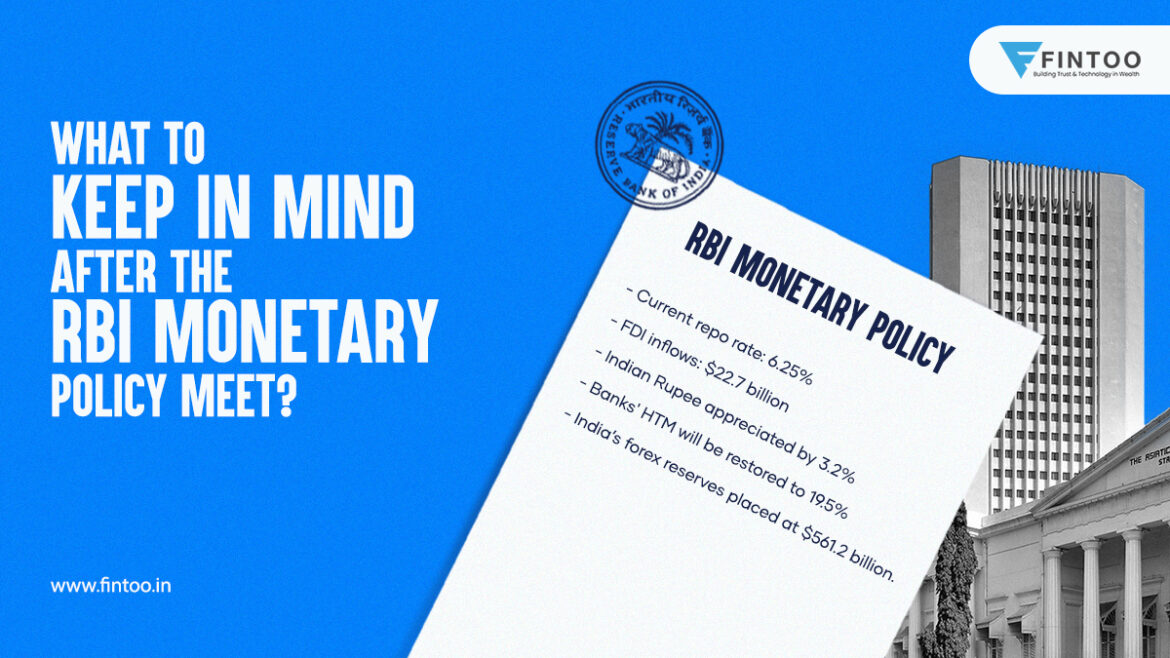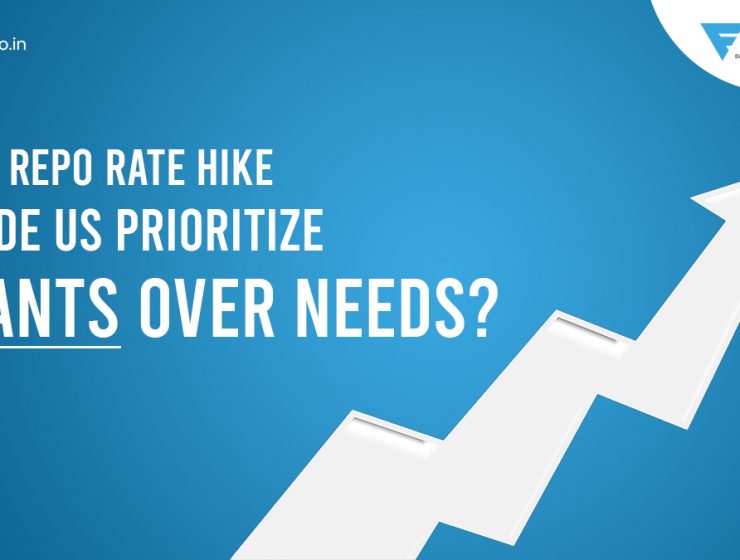

RBI monetary policy committee made some important announcements in its meeting held on 7th December 2022. As the global economy is experiencing turbulence, it has made it mandatory for central banks to play their part in bringing the situation under control.
Owing to these current macroeconomic conditions, RBI has spoken about its plans for the Indian economy. We have elaborated on some of the major highlights and their impact on individuals.
Repo rate hike
With inflation violently affecting the international market, many major economies of the world are going into a downward spiral. Adding to this, the geo-political situation has also contributed to the weakening of the financial market, thus paving the way for a possible global recession. To get the situation under control, central banks all around the world are increasing their repo rates. As regards to that, despite already announcing a rate hike four times this year, RBI yet again increased the repo rate by 35 bps to 6.25%.
Impact of the rate hike on debt mutual funds
The dispersion of this rate hike usually has a direct impact on debt mutual funds. This year, the performance of debt funds was not satisfactory as RBI maintained its stance on the withdrawal of accommodation and hiking interest rates. The past year’s returns on debt funds ranged between 3.2% to 4.6%.
Debt funds share an inverse relationship with interest rates, due to which a rise in the interest rate causes the bond prices to fall. In short, it negatively impacts debt funds by reducing their NAVs. In view of the current scenario, it would be recommended to invest in target maturity funds having a medium to long-term horizon. As the debt market is prone to facing volatility, target maturity funds become a better investment avenue to opt for, since they mainly invest in government securities, PSU bonds, high rates papers, etc. They also give a tax advantage to investors with the benefit of indexation.
Impact of the rate hike on housing and loans
Even under normal circumstances, housing is a costly affair. It takes a lot of effort and financial planning to be able to own and live with your family in the house of your dreams. And when your finances cannot suffice the amount you need to do so, you resort to home loans. However, the increased repo rate has tremendously affected the housing sector and put a strain on the budget of loan holders. To elaborate further, when banks are imposed with higher costs of borrowing funds, they tend to shift this burden onto loan holders in the form of charging a higher interest cost.
This pushes home loan holders into a deeper debt trap as their liabilities keep on piling up. This makes it unfavorable for people to opt for new loans or plan to buy a house under such economic conditions. This has also adversely reduced the housing demand.
Bharat Bill Payment System and UPI expansion
By introducing a single-block-and-multiple debit in UPI, RBI has expressed its plans to expand the scope of the Bharat Bill Payment System. The primary aim behind this is to enable the factor of ease in the payment-making process.
Through this system, customers can now create a payment mandate against a merchant by blocking money in their bank accounts which can be debited at any time. So far, customers have been making recurring payments for SIPs, OTT subscriptions, etc., via the UPI Autoplay facility. By making this facility available across all e-commerce platforms, RBI’s vision is to ensure a complete and organized process of online transactions, so that customers can invest in securities, book hotels, carry on online shopping, etc., with ease.
Moreover, merchants will be assured of timely payments while the customer still holds his fund in his account until the date of actual delivery. This will create proficiency in the commerce space for making payments in a regularized manner.
Where does India stand on the economic scale?
Here’s an overview of how India’s growth prospects had been for the year
- FDI inflows rose to $22.7 billion from April to October 2022.
- Indian Rupee appreciated by 3.2% between April-October 2022.
- The HTM limit for banks has been extended up to March 2024.
- Banks’ HTM will be restored to 19.5% from 23% starting from April to June 2024.
- India’s forex reserves as on December 2, 2022, are placed at $561.2 billion.
Forecasts:
- RBI has lowered the GDP growth forecasts for FY23 to 6.8% from 7%.
- The Consumer Price Index (CPI) inflation forecasts for FY23 will be retained at 6.7%.
- Inflation is expected to remain higher than 4% for the next 12 months.
Conclusion:
Given the current economic outlook, RBI is of the view that this may not be the last rate hike in the cycle. The trajectory of India’s position in the economic market will be heavily influenced by the rate of the global slowdown and its recovery. Currently, the growth prospects are not promising enough as the nearing recession is forcing countries to cut down on costs. This can be alarming for India’s export business and service sector.
Being a developing country, we cannot dodge the heat of this global crisis, and till things are not brought under control, they will continue to affect our household budget and financial plans. Under such a situation, you need to stay vigilant and restructure your portfolio. Maintain proper asset allocation and try to minimize your expenses as much as possible. Avoid or postpone taking any new loans during such times in order to save on interest costs.
Disclaimer: The views expressed in the blog are purely based on our research and personal opinion. Although we do not condone misinformation, we do not intend to be regarded as a source of advice or guarantee. Kindly consult an expert before making any decision based on the insights we have provided.
Related Posts
Stay up-to-date with the latest information.


